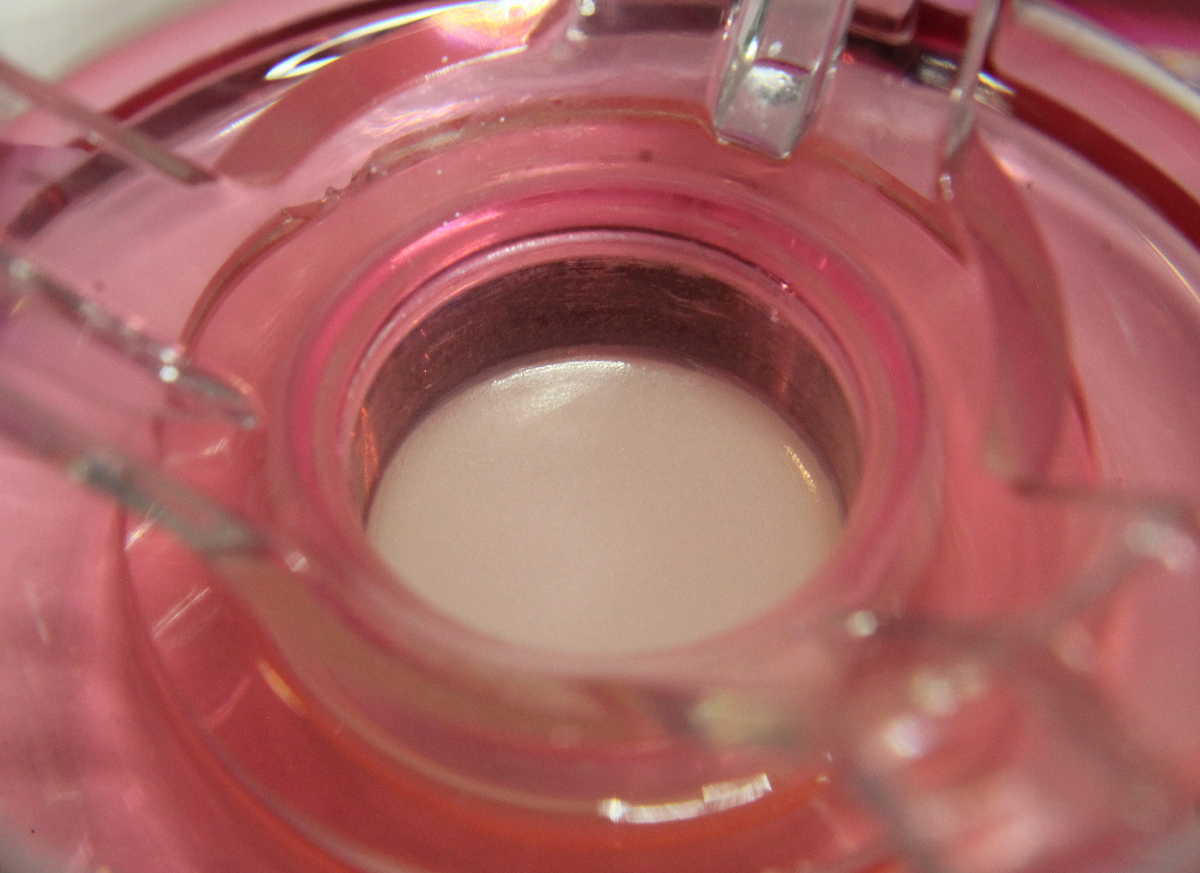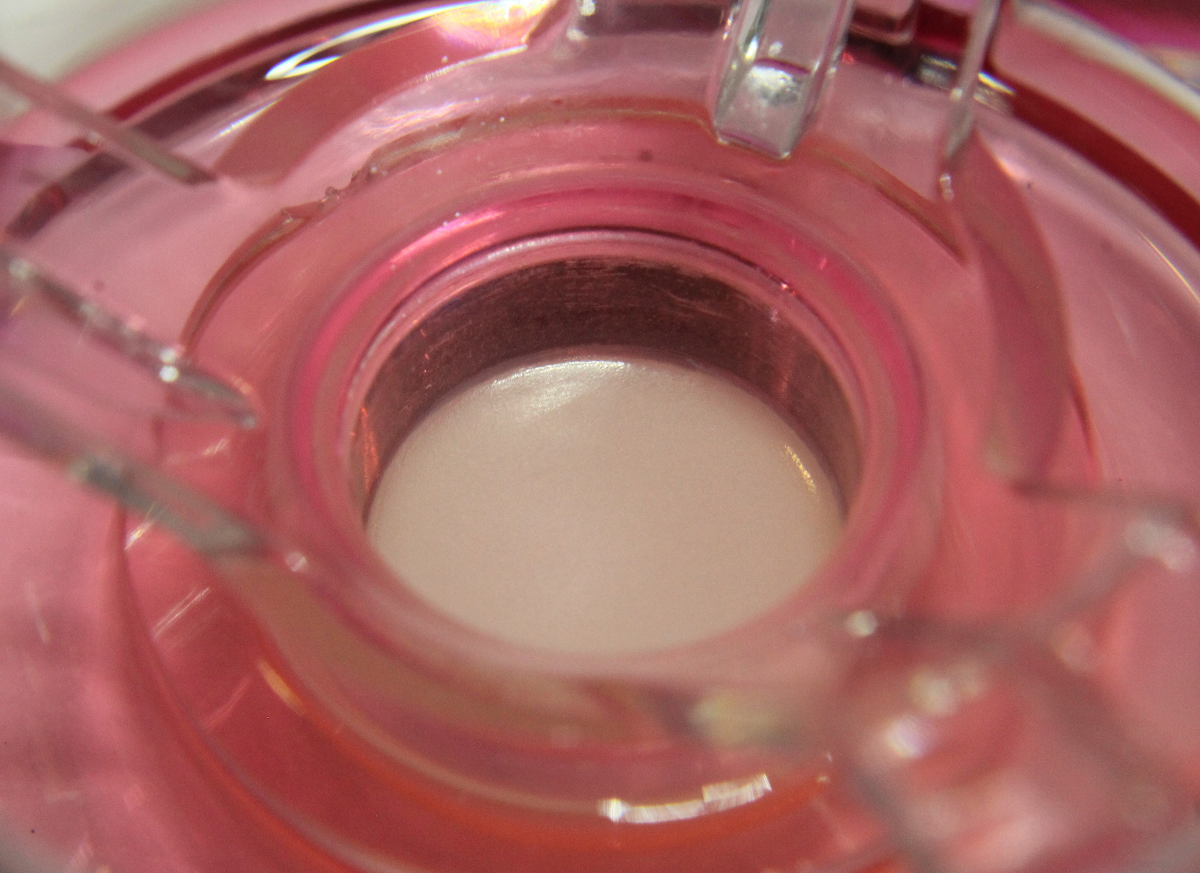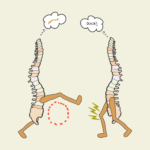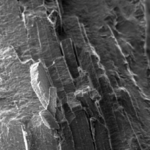The skin provides a barrier and physical cushion that protects the body from the external environment. In addition to responding to external physical stimuli such as pressure and tension, the skin is constantly in a state of “tensional homeostasis” in which the cells near the outer layer of skin maintain a stable and steady tension through collagen fibers. This tension helps keep internal structures strong, yet flexible. When skin is cut from an organism, it contracts in the same direction in which collagen fibers, texture, and the hairline are aligned. While synthetic skin models have been developed as alternatives to testing animals when developing safe and functional skincare products, it is difficult to study the tension distribution in the body because of its complexity.
In collaboration with the ROHTO Pharmaceutical Co., Ltd., the research team led by Takashi Tsuji at RIKEN BDR developed a human skin equivalent (HSE) that reproduces the tension balance of natural skin, and explored the role of tensional homeostasis in controlling skin structure and function.
The team first experimented on ways to construct a skin model that reproduces the tensional homeostasis. Conventional skin models shrink during the construction process, which eliminates the tension and therefore the collagen and cells in the dermis–the second-most outer layer of skin–are not properly oriented. The team developed a new model by sandwiching the artificial skin in a culture vessel and fixing the degree of contraction. This reproduced a natural tensional homeostasis, the model did not shrink during culture, and its tissue structure was similar to that of natural skin, with collagen fibers and cells aligned in the same lateral direction as the tension. In addition, dermal fibroblast cells in this model stretched uniformly in the lateral direction, indicating that reproduction of the tension equilibrium is important for maintaining the orientation of skin tissue.
By exploring the molecular mechanisms underlying skin-tension homeostasis, the team found that compared to artificial skin without tension, the synthetic skin with tension equilibrium had more collagen fibers in the dermis, reproduction more primary skin cells, and had greater expression of certain genes. This means that tensional homeostasis facilitates healing and regeneration of the HSE and makes it more responsive to some drugs. The researchers suggest that skin-tension balance regulates skin functionality via mechanical stress signals.
Although the healthcare market is expected to grow to 5.25 trillion dollars within 10 years, social demands to reduce using animals, especially for skincare products and medicines, is increasing. “HSEs have crucial roles for scientific evidence-based skin health care and disease research that can help us reduce research in animals,” Tsuji says. “Our study will open a novel field of animal-experiment replacement based on scientific evidence in the fields of healthcare and drug discovery. We believe that our HSE model will greatly contribute to the technological developments of next-generation skincare, and improve the quality of life.” ✅
The skin provides a barrier and physical cushion that protects the body from the external environment. In addition to responding to external physical stimuli such as pressure and tension, the skin is constantly in a state of “tensional homeostasis” in which the cells near the outer layer of skin maintain a stable and steady tension through collagen fibers. This tension helps keep internal structures strong, yet flexible. When skin is cut from an organism, it contracts in the same direction in which collagen fibers, texture, and the hairline are aligned. While synthetic skin models have been developed as alternatives to testing animals when developing safe and functional skincare products, it is difficult to study the tension distribution in the body because of its complexity.
In collaboration with the ROHTO Pharmaceutical Co., Ltd., the research team led by Takashi Tsuji at RIKEN BDR developed a human skin equivalent (HSE) that reproduces the tension balance of natural skin, and explored the role of tensional homeostasis in controlling skin structure and function.
The team first experimented on ways to construct a skin model that reproduces the tensional homeostasis. Conventional skin models shrink during the construction process, which eliminates the tension and therefore the collagen and cells in the dermis–the second-most outer layer of skin–are not properly oriented. The team developed a new model by sandwiching the artificial skin in a culture vessel and fixing the degree of contraction. This reproduced a natural tensional homeostasis, the model did not shrink during culture, and its tissue structure was similar to that of natural skin, with collagen fibers and cells aligned in the same lateral direction as the tension. In addition, dermal fibroblast cells in this model stretched uniformly in the lateral direction, indicating that reproduction of the tension equilibrium is important for maintaining the orientation of skin tissue.
By exploring the molecular mechanisms underlying skin-tension homeostasis, the team found that compared to artificial skin without tension, the synthetic skin with tension equilibrium had more collagen fibers in the dermis, reproduction more primary skin cells, and had greater expression of certain genes. This means that tensional homeostasis facilitates healing and regeneration of the HSE and makes it more responsive to some drugs. The researchers suggest that skin-tension balance regulates skin functionality via mechanical stress signals.
Although the healthcare market is expected to grow to 5.25 trillion dollars within 10 years, social demands to reduce using animals, especially for skincare products and medicines, is increasing. “HSEs have crucial roles for scientific evidence-based skin health care and disease research that can help us reduce research in animals,” Tsuji says. “Our study will open a novel field of animal-experiment replacement based on scientific evidence in the fields of healthcare and drug discovery. We believe that our HSE model will greatly contribute to the technological developments of next-generation skincare, and improve the quality of life.” ✅
Kimura et al. (2020) Tissue-scale tensional homeostasis in skin regulates structure and physiological function. Comm Biol. doi: 10.1038/s42003-020-01365-7
Further reading
Chen et al. (2020) A hypothalamic novelty signal modulates hippocampal memory. Nature. DOI: 10.1038/s41586-020-2771-1.












